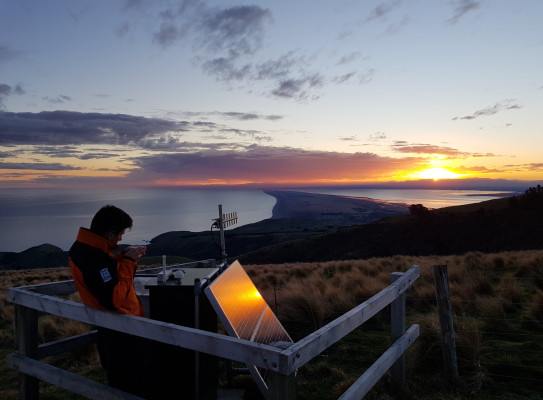Earthquake Early Warning in New Zealand

While Aotearoa New Zealand experiences frequent damaging earthquakes, we do not currently have an official national earthquake early warning (EEW) system.
New research by Massey University, released today, has investigated current knowledge and response to earthquake early warnings in New Zealand.
Google launched its trial of an Android Earthquake Early Warning (EEW) alert system in New Zealand in 2021. The system aims to provide people with a few seconds heads up that earthquake shaking may be imminent, hopefully allowing them to mentally prepare and take immediate action to stay safe. There’s a description of how their service works available here on their website.(external link)
The latest research by the Joint Centre for Disaster Research at Massey University(external link) shows that, while most people thought the alerts were useful, without any public education provided before the rollout of the trial many people did not take correct action following the alerts. The trial introduced confusion, as many people thought the alerts were coming from GNS, through the GeoNet programme.
GNS Science supports innovation that helps build Aotearoa New Zealand’s resilience to earthquakes, and that complements the crucial work done by GNS Science and its GeoNet programme, however GNS was not involved in the development of the Android Earthquake Alerts System. The Google Android Earthquake Early Warning (EEW) alerts are not generated by GNS science, and they do not use GeoNet data. The system relies on sensors in Android phones.
The National Emergency Management Agency (NEMA) advises that in an earthquake Drop, Cover and Hold is the right action to take. If you are near the coast or a lake and you feel an earthquake that is long (more than a minute long) or strong (it is difficult to stand up) then Get Gone to higher ground. Find out more about how to stay informed here: Stay informed — Get Ready — Emergency preparedness in New Zealand(external link)
The future of earthquake early warning in New Zealand
The Resilience to Nature’s Challenges (RNC) Earthquake & Tsunami programme, co-led by GNS Science’s Dr Bill Fry, is currently assessing and testing a range of earthquake early warning technologies to determine their usefulness for Aotearoa New Zealand’s geography, population distribution, and emergency response systems.
The team is working closely with central government agencies and infrastructure managers, to understand the proportion of earthquakes that would be detected by the current generation of warning algorithms prior to damaging shaking reaching populated areas. They aim to better understand the usefulness of warning times within the context of emergency management and the needs of infrastructure providers. To do this, the team are using the RNC synthetic earthquake catalogue, which models New Zealand’s earthquake cycle going back hundreds of thousands of years.
The team’s goal is to develop recommendations for decision-makers on suitable Earthquake Early Warning (and Tsunami Early Warning) technologies for Aotearoa New Zealand. https://resiliencechallenge.nz/project/testing-early-warning-systems/(external link)
Additional work being led by Massey University’s CrisisLab is investigating low cost, citizen-science approaches to EEW that could complement a national EEW system. https://www.crisislab.org.nz/eew(external link)
